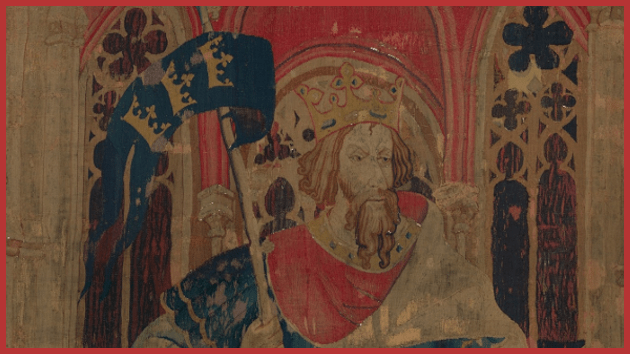
A Gift of State
In August of 1974 Richard Milhous Nixon became the first and only U.S. president to resign from office. But during his presidency - May 22 -30, 1972 - he made a historic trip to the Soviet Union.
The History Channel succintly summarizes his visit:Nixon’s second visit (his first visit was as president) to Moscow in May 1972, this time as president, was for a more conciliatory purpose. During a week of summit meetings with Soviet leader Leonid Brezhnev and other Soviet officials, the United States and the USSR reached a number of agreements, including one that laid the groundwork for a joint space flight in 1975. On May 26, Nixon and Brezhnev signed the Strategic Arms Limitation Treaty (SALT), the most significant of the agreements reached during the summit. The treaty limited the United States and the USSR to 200 antiballistic missiles each, which were to be divided between two defensive systems. President Nixon returned to the United States on May 30.
This trip wasn't a spur-of-the-moment decision. Over 6 months prior to the trip the White House commissioned the Cybis Porcelain Studios of Trenton, New Jersey to create a ceramic chess set as a gift of state to be presented to Leonid Breshnev during the visit. But 6 months isn't much time for such a monumental and prestigious project. According to the New York "Times" (Feb. 9, 1975):
Working day and night, the finely detailed and elaborate pieces were completed the day before Mr. Nixon's departure. Suddenly, Mr. Chorlton, who is president of the company, gasped in horror: How in the world were the pieces to be packaged so that none would get damaged?
After much near panic, it was decided to wrap the entire carrying case in Mrs. Chorlton's favorite bedspread and tie it together with a silk cord.
Because it was presented during the Summit Meeting, the set is sometimes called "The Summit Presentation Chess Set," but it is generally referred to as "The Cybis Presidential Chess Set."
Creating the set involved a certain amount of consideration. The artist, Harry Burger Jr. of Trenton, NJ., who was a freelancer contracted by Cybis for this special job, had visited the Met Cloisters in NYC in 1949 where he was impressed by the "Nine Heroes Tapestries" and partly based his creation upon the representations of the King Arthur and Alexander tapestries.
NY "Times," May 29, 1972:
Present Nixon's gift to the Soviet Union, a porcelain chess set, was inspired by a medieval tapestry seen by the artist, Harry Burger Jr., on a visit to the Cloisters Museum in New York in 1949.
The characters in the tapestry, “The Nine Heroes,” immediately suggested a chess set to Mr. Burger, and he began work on the 5‐to 7inch figures soon after he returned to his home in Trenton. He completed clay models of the set 23 years ago, but only recently was the final work produced by the Cybis Porcelain studio of Trenton.
. . .
When the White House began searching for an appropriate gift for the Soviet Union it again turned to the porcelain studios of Trenton and the Burger chess set was one of a number of works shown to the President by Cybis.
Each piece required as many as 20 molds for individual parts, which were put together and fired to a porcelain bisque, an unglazed finish. Porcelain painters then followed the directions of the artist and decorated each piece with a palette that included 24‐carat gold. Half the set is done in shades of pink and red, the other in blues and turquoise.

The Nine Heroes Tapestries Room (Gallery18) in the Met Cloisters and Museum

King Arthur -upon whom the king was based.

Alexander's archer - upon whom the pawns were based.
The chessmen are all approximately the same size - 7" unlike the varied sizes in a regular chess set. The opposing armes are turquoise and burgundy.
Each figure is mounted upon a golden jewel-encrusted pedestal. A lady-in-waiting peers out from the rook's turret while a page looks out from the top. The knight, wearing a visored and plumed helmet, rides an armoured steed. The queen holds a hooded falcon on her gloved hand and the king weilds an 18k gold standard. The bishop, not shown here, carries a psalter in his right hand and a crozier in his left. The pawn has the queen's falcon embroidered on his shirt and carries a bow and a quiver of arrows closely mirroring Alexander's archer in the tapestry.
A three foot square chessboard accompanied the set. The light squares were made of curly maple from a 200 year old tree in Montgomery Co., Pennsylvania and the dark squares of curly black walnut from a tree in Bucks Co., also in Pennsylvania.
To the People of the The Union of Soviet Socialist Republics
From President and Mrs Richard Nixon and the People of the
United States of America, May 1972




The 1972 "Catalogue of Copyright Entries" lists the 6 distinct chess piece designs on page 295:



The Cybis Presidential Chess Set is one-of-kind. However, the artist's proof set also existed and this set went on tour of the United States during 1973-4. Then, in 1979, Cybis finished production of a Commemorative set, limited to 10, that closely resembled the Summit set. The House of Staunton shows images of the Commemorative set, but incorrectly identifies it as the same as the Summit set. The opposing colors of the Commemorative set are blue and green and each piece, while similar, bears noticeable differences.





